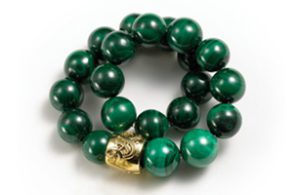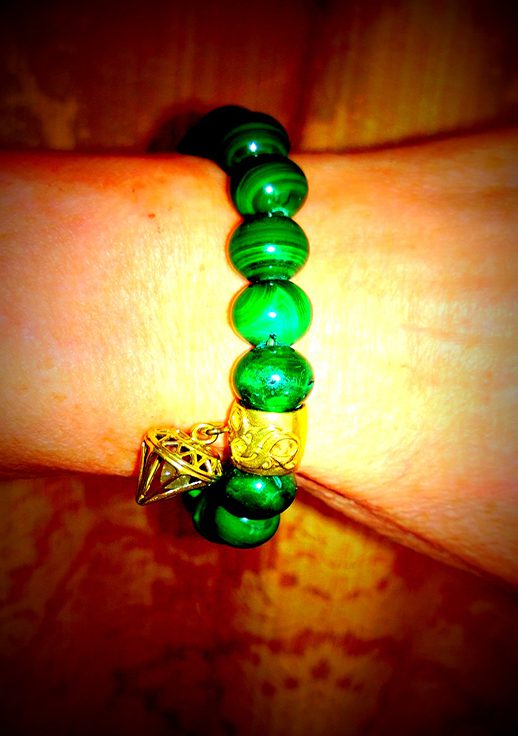Sustainable Jewelry – Buzzword or The Real Deal?
 We’re all concerned with creating a cleaner world with a brighter future, and that starts with each one of us. For those of us who love (love love) jewelry, this may be a concern a of yours. The making of jewelry starts with mining minerals and metals from the earth, can involve harsh chemicals during the manufacturing process, and might take\ place in the poorest countries with the worst worker safeguards.  So what is a jewelry loving person like me (& you!) to do? Thankfully, we have many options today that didn’t exist even ten years ago.
We’re all concerned with creating a cleaner world with a brighter future, and that starts with each one of us. For those of us who love (love love) jewelry, this may be a concern a of yours. The making of jewelry starts with mining minerals and metals from the earth, can involve harsh chemicals during the manufacturing process, and might take\ place in the poorest countries with the worst worker safeguards.  So what is a jewelry loving person like me (& you!) to do? Thankfully, we have many options today that didn’t exist even ten years ago.
Diamonds
We have all heard about blood diamonds, and most of us know about the Kimberly Process – which has worked across governments to stop the flow of conflict diamonds. The Kimberly Process may not perfect, but it includes a very strong series of protection procedures, which before did not exist at all. So how do you go making the diamonds are sustainable in your sustainable jewelry? Start by asking the jewelry where he buys his diamonds, and if his diamonds comply, at a minimum, with the Kimberly Process. If this is a very big concern for you, you might consider buying ForeverMark diamonds, which are each laser inscribed with a serial number; so the buyer will have confidence about her diamond’s life from the mine to her jewelry box. DeBeers also sells diamonds responsibly sourced to Sightholders (via contracts with DeBeers) who then make them available to diamond and jewelry manufacturers throughout the US and around the world. So, ask your jeweler where their diamonds are sourced/purchased
There are also many jewelry designers who pride themselves on only using diamonds with a sustainable pedigree. For instance, Jennifer Dawes primarily uses diamonds sourced from the metal refineries – diamonds that have been re-purposed from jewelry that was sold for its metal content. Every time we take a diamond from an old or undesirable piece of jewelry and redesign it in new jewelry, that’s one diamond that doesn’t have to be removed from the ground and moved across the earth to get to you. So, you can go diamond mining in your own jewelry box…or your girlfriend’s jewelry box 😉
Finally, keep in mind that buying Diamonds anywhere in the US is good for diamond producing countries’ funding of  healthcare and education. Few people know that Diamond revenues enable children in Botswana to receive free education up to the age of 13. More is being done every year and here are two of my favorite organizations that I continually to promote:
The Diamond Empowerment Fund (DEF) is an international non-profit organization supporting education initiatives in diamond producing countries. Website: www.diamondempowerment.org
The Diamond Development Initiative (DDI) works to ensure Diamonds become an engine for development in countries where artisanal diamond-diggers labor in poverty, outside the formal economy. Website: http://www.ddiglobal.org/
Color Gemstones
If big bursts of gemmy color are your thing, you’ll also want to know where your colored gemstones were sourced. Gemfields is one organization that is working to improve mining practices for colored gemstones and provide consumers with confidence that they are buying sustainable jewelry.
Metals
Other good candidates for recycling are precious metals, and many jewelry designers are buying metals from refineries handling large volumes of recycled gold, silver, and platinum. The main content of jewelry is the metal, diamonds, and gemstones – so if you’ve taken time to ask questions about where the precious materials in your jewelry come from, you’ve done a lot to ensure that what you are wearing is sustainable jewelry.
Manufacturing
Across the world, manufacturers are seeking ways to conserve water, use natural compounds instead of harsh chemicals, and use less electricity. The jewelry industry is part of that movement, and many manufacturers are doing exciting things like installing solar panels, developing more sustainable manufacturing methods, using recycled materials, and seeking ways to reduce their carbon footprint. One important person leading this movement is Christine Dhein, a jewelry designer and teacher at the Revere Academy of Jewelry Arts. Â Christine has been doing extensive research into green jewelry manufacturing practices, and publishing those results on her Green Jewelry News website and in her subscription newsletter.
We change the world one person, and one decision, at a time. As a jewelry lover, I want to wear beautiful, meaningful jewelry.  As a humanity-lover, I want to do my part to be a better steward of the earth.  So it pleases me to know that all these options for wearing sustainable jewelry are available … and that more jewelry manufacturers and sources join this effort every day. Wearing diamonds and fine jewelry makes us feel more beautiful and feel more confident…we also can feel good about it.
